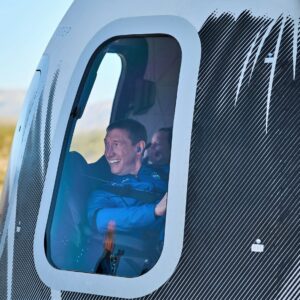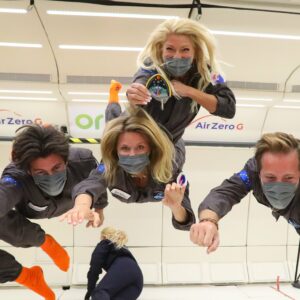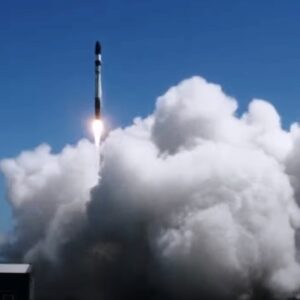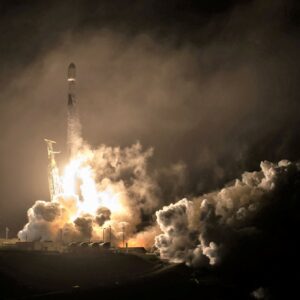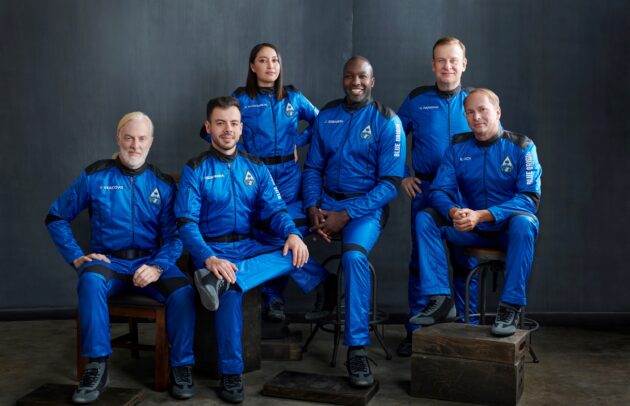
The suborbital tours provided by Jeff Bezos’ Blue Origin’s space venture have been notable for who was flying, but the mission set for launch on Saturday is just as notable for how some of its crew members are getting to fly.
One spaceflier, Katya Echazarreta, is the first beneficiary of Space for Humanity’s Citizen Astronaut Program, a philanthropic effort that sponsors spaceflights for worthy applicants. Echazarreta, an electrical engineer who’s the co-host of the YouTube series “Netflix IRL” and a member of CBS’ “Mission Unstoppable” team, will be the first Mexican-born woman to reach the final frontier.
In an Instagram post, Echazarreta said she looks forward to experiencing the Overview Effect, a broadening of perspective associated with viewing Earth from space. “I plan on coming back ready to continue changing the world,” she wrote.
Another crew member, Victor Correa Hespanha, will be the second Brazilian to fly in space and the first “cryptonaut.” His seat is sponsored by the Crypto Space Agency, which is funded entirely by the NFT community through mint proceeds. Hespanha won the trip in a lottery.
“My first dream is to become a soccer player,” he said in a video posted to Twitter. “And the second one is to be an astronaut, because I have so many curiosities to explore in the universe.”
Evan Dick, an investor at Dick Holdings LLC, will be the first person to take a second flight on Blue Origin’s New Shepard suborbital spaceship. He was one of the crew members for last December’s NS-19 mission, flying alongside the daughter of pioneering Mercury astronaut Alan Shepard.
Rounding out the six-person crew are Hamish Harding, chairman of Action Aviation; Jaison Robinson, the founder of a commercial real-estate company called JJM Investments and a co-founder of Dream Variations Ventures; and Victor Vescovo, co-founder of Insight Equity, a private equity investment firm.
This will be the fifth crewed suborbital space launch for Blue Origin, which has flown such luminaries as Star Trek captain William Shatner, aviation pioneer Wally Funk and Bezos himself. Liftoff from the company’s Launch Site One in West Texas is scheduled for as early as 8 a.m. CT (6 a.m. PT) Saturday, with streaming coverage set to begin via Blue Origin’s website and YouTube at T-minus-60 minutes.
There’s always a chance that weather or technical snags could create delays. Two weeks ago, Blue Origin called off an earlier launch attempt when engineers determined that one of New Shepard’s backup systems was not meeting their expectations for performance.
Assuming all goes according to plan, New Shepard’s hydrogen-fueled booster will send the crew capsule beyond the 100-kilometer (62-mile) line that marks an internationally accepted boundary for outer space.
The spacefliers will experience a few minutes of weightlessness and look out at the curving Earth through the capsule’s picture windows. The autonomously controlled booster will land itself not far from the launch pad, while the capsule will make a parachute-aided touchdown amid the Texas rangeland. The whole trip should take a little more than 10 minutes.
Unlike Virgin Galactic, which has publicized a $450,000 price tag for its suborbital space trips, Blue Origin negotiates its ticket prices privately and doesn’t disclose how much its customers are paying. But the routes followed by Echazaretta and Hespanha suggest that not everyone will need to shell out hundreds of thousands of dollars to get their ride to space.
Although Echazaretta is the first “citizen astronaut” sponsored by Space for Humanity, she’s not the first commercial spaceflier to have a ticket to space purchased by someone else. Last year, three spacefliers had their orbital fares covered by billionaire Jared Isaacman for the philanthropic Inspiration4 mission.
Going back further, British chemist Helen Sharman flew to Russia’s Mir space station in 1991 after being selected in a privately funded campaign called Project Juno.
Saturday’s mission is known as NS-21 because it’s the 21st New Shepard flight (counting uncrewed launches). Here’s the schedule for NS-21, which has a launch window opening at 8 a.m. CT (6 a.m. PT):
- T-minus-7.5 hours: Rocket rollout
- T-minus-3 hours: Propellant load
- T-minus-45 minutes: Astronauts head out to pad
- T-minus-35 minutes: Capsule ingress
- T-minus-24 minutes: Hatch closed
- T-minus-10 minutes: Final “go” for launch
